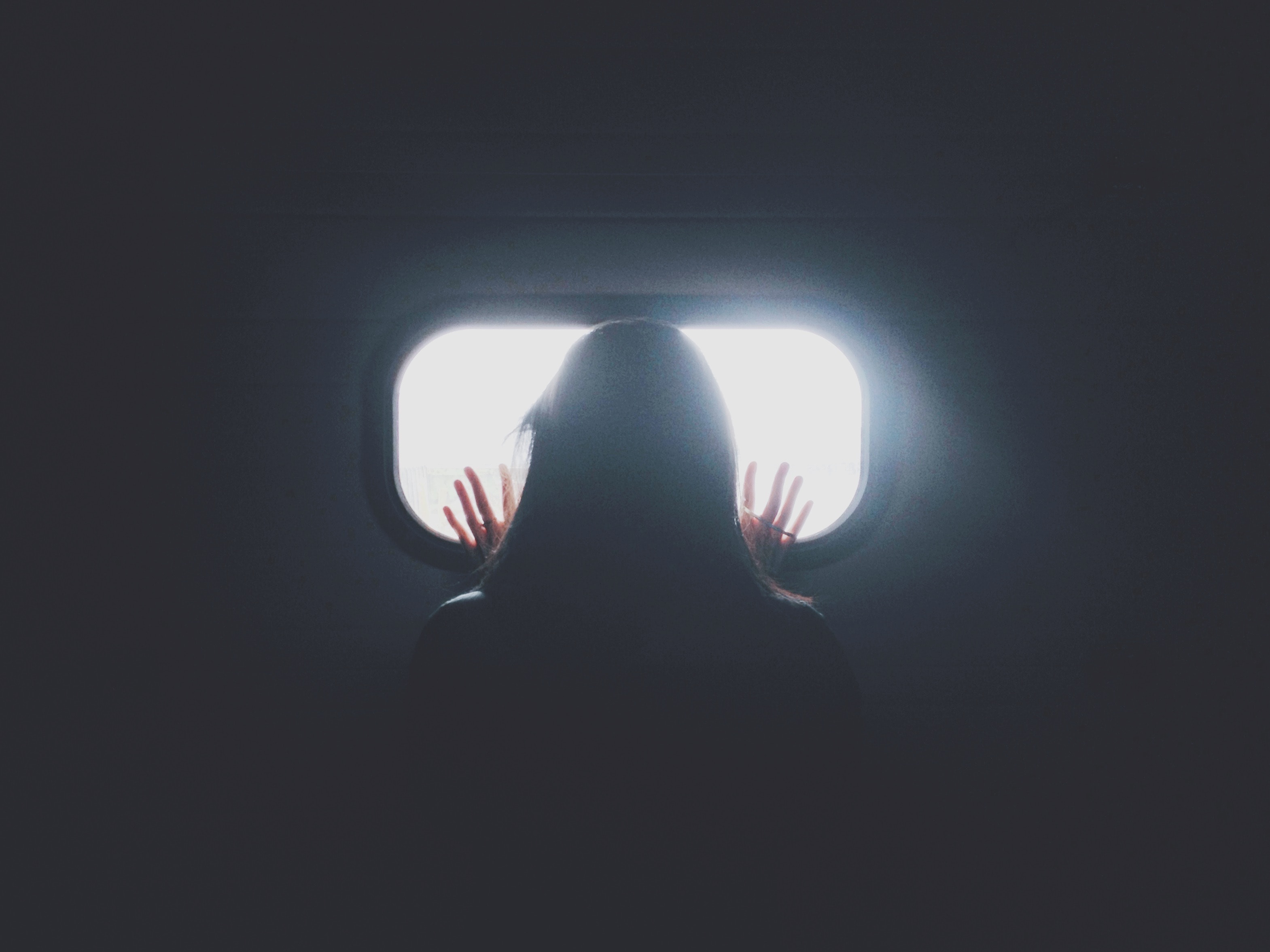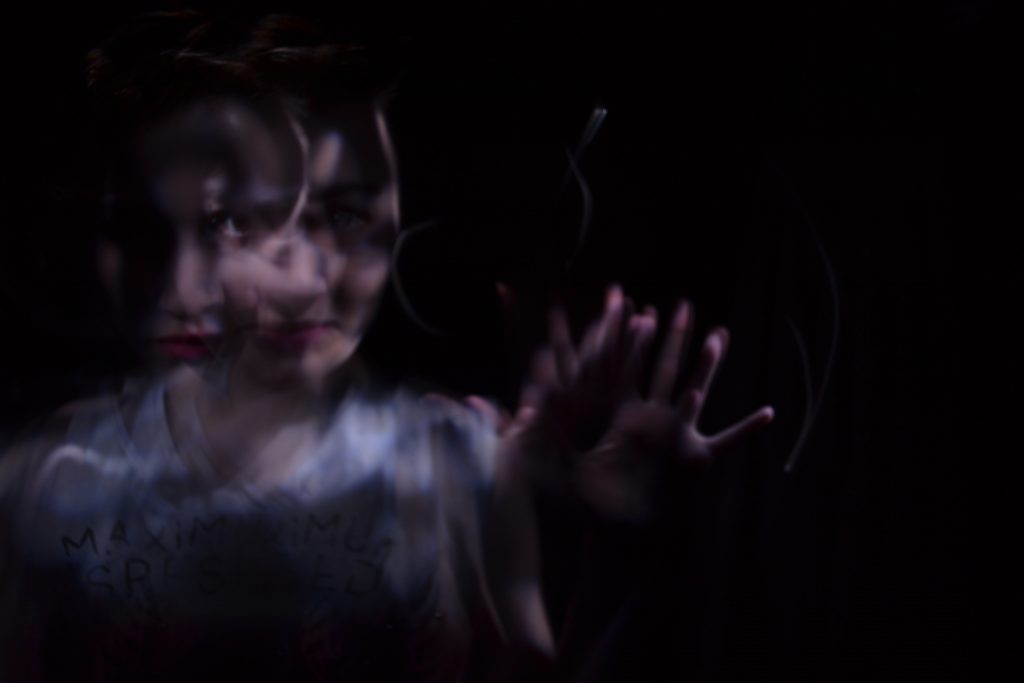‘Don’t hope, cope’. Tomi Ungerer — ‘Just forgot that life is pain and then remembered again’. Tweet — ‘Truth is like poetry, and most people fucking hate poetry’. Lotte Lentes — ‘I don’t need you, I have Wi-Fi’. Addie Wagenknecht — ‘Quitting is a strength, not a weakness’. Ingeborg Bachmann — ‘Trigger warnings trigger me’. Johan Grenzfurthner — ‘Going to become a camgirl and create an army of shitbots to raise my profile in the community’. dark pill — ‘When we can’t dream any longer we die’. Emma Goldman — Technics today: from password to theory spraying — ‘With an Iron Fist, We Will Chase Humanity into Happiness’. Bolshevist motto — Small talk: ‘My penthouse AirBnb ends tomorrow and chauffeurs keep asking to be rated 5 stars’. — ‘Nothing will kill you more than your own thoughts’. PoemPorns — ‘We’ll Look Back at Our Smartphones Like Cigarettes’ Cal Newport — ‘We’re doing the Lord’s work’. click-farm maintainer — ‘I wanted to cut myself off from the past and instead I cut myself’ G.C. — ‘find what you love then get distracted’ @melissabroder — Burroughs Today: ‘Advice for young people: stop when you are done’.
Let’s dive into social media weariness, the cause of our tired eyes. Which ‘techniques of resignation’ are we exposed to? The blissful ignorance after browsing an entire ecosystem of narratives is unsurprising. Culture is a pendulum, and the pendulum is swaying. The organized optimism, hard-coded in online advertisements and other forms of algorithmic advice, turned out to just be producing anxiety. ‘What can’t be cured, must be endured’. (Caroline Cowles Richards) The suffering, sorrow, and misery are tagged and filtered by our own self-censorship. We’ve been captured and feel frozen. We receive the anger of the online Other. The growing imbalance of digital enchantment is causing neither revolution nor revolt, but neither does it fade out. Welcome to the Great Stagnation. We, the online billions, stuck on the platform.
Writing in The New Inquiry Indiana Seresin discusses Lauren Berlant’s remarks on tectonic shifts in contemporary social power. ‘As we are living now, when privilege unravels it goes out kicking and screaming, and people lose confidence in how to be together, uncertain about how to read each other, and incompetent about even their own desire’. This uncertainty on the level of social interaction is easily noticed on the current platforms, produced by the same technical arrangements as online social relationships. There’s a cultivated fear to get in (direct) contact with others. The carousel of causes and effects is accelerating the culture of uncertainty Berlant refers to. Is social media to blame or should we merely accept that it is nothing but a mirror of society? What happens to our ability to act when the two can no longer be separated? What is the long-term impact of losing confidence in how to be together, caused by online networks? How can we claim to build up communities in a time of ongoing uncertainty? Indiana Seresin ends by asking: ‘The way we can remain secretly attached to the continuity of the very things we (sincerely) decry as toxic, boring, broken. Faced with the possibility of disappointment, anesthesia can feel like a balm’.
As Jodi Dean points out, the source of the decline in organizational power to create change should be allocated in the emphasis on individuality. The unlimited possibilities to expand the self has crippled our possibility to organize effective resistance. Much of the ‘vague, inchoate contemporary left of social media, university campuses, NGOs, and socially engaged art, appeals to individual identity, endeavours to protect individual identity, and vigilance against suspected threats to individual identity displace efforts to build collectivity’. Instead, Dean wants to remind leftists ‘of another figure of politics, one that was prominent in the 20th century as a figure for all united in emancipatory egalitarian struggle against racism, sexism, capitalism, and imperialism’: the figure of the ally.
Once we’re locked in, the path to infinity has been blocked. We are, instead, caught in a Truman Show-like repetition of the ‘perpetual now’, toiling in the micro-mess of online others that try to do their best, masking their failures and despair — like everyone else. Franco ‘Bifo’ Berardi observes the mental state of today’s students: ‘I see them from my window: lonely, watching the screens of their smartphones, nervously rushing to classes, sadly going back to the expensive rooms that their families are renting for them. I feel their gloom, I feel the aggressiveness latent in their depression’. In the social media-era, ‘Oblomovism’ is not an option — particularly for those who cannot afford to get stuck in the abyss. We experience the sadness of online existentialism, minus the absurdity.
If only ‘interpassivity’ was really implemented in code (instead of being yet another Austrian idea). Then we would indulge in a permanent state of indolent apathy. Instead, there’s nothing passive about human-machine interactions. We click, we scroll, we swipe. There is no other option. On social media, the Zen status of detachment is an ontological impossibility. We’re never really lurking — our presence is always noted — and we can, therefore, never truly enjoy the secretive voyeur status. Interaction is our tragic existence. Instead, we’re constantly asked to ‘upgrade’, fill in forms, and rank our taxi drivers.
Meet Borja Moya, who writes on Medium, warning of outsourcing your identity and reality to social media platforms. While travelling, Borja noticed that a lot of people were travelling alone and showed symptoms of depression. ‘Something interesting happens when you disconnect from your phone and focus on the real world. You start to observe. It hit me pretty clearly: Social media is transforming our identities and making us delusional with the way we perceive reality’. Borja uses the ‘show’ metaphor where you are the player: ‘You prove that you’re better than the people around you. It doesn’t matter if you’re feeling depressed, what matters is how you look to others’. Writing in a self-confessional style, Borja Moya admits that sticking with reality is painful. ‘Facing one’s reality can be one of the toughest challenges anyone can face. And this is why these platforms come in handy. Deep down, people don’t want to acknowledge things about themselves. They just don’t. It’s easier to play the status game and feel great in the short-term’.
Social media is a vital tool to maintain dignity for the impoverished middle classes in the West. Take Sybil Prentice. Her writings deal with ‘a future entirely subsumed by “sharing” economies and platforms, where all paid labour has been reduced to the service industry’s mise-en-abyme’. She gives a rough edge to the ‘inauthenticity’ of the fashion world and make-up brands. Here, it is no longer relevant to distinguish fact from fiction. We’re all encouraged to blur the line between real and fake. She’s living the ‘princess lifestyle’ in ‘posh poverty’:
‘not to be confused with faux bourgeoisie because…I was raised in wealth, albeit fluctuating wealth. Peak posh was father as Vice Chairman for a bank I will not disclose. Faux bourgeoisie is Michael Kors or like a Hilton downgraded to three stars because it hasn’t renovated since 1996 or wearing red-bottomed heels that aren’t Louboutins. Ghetto fabulous is a better existence. The doc diagnosed me as manic depressive and, more importantly, I need to sustain this lifestyle. Luxurious by nurture, cut throat by nature’.
If you catch her on the phone, she communicates exclusively via WhatsApp, ‘sending mini audio clips to friends. This involves more engagement than texting but less commitment than a regular phone conversation. When everything is mediated via voice memos, I’m in boss mode’. During the entirety of her ‘disgraceful’ 45-minute period on Tinder, she had ‘men PayPal-ing [her] €20 per audio message, generally [her] recording variations of: You’re such a fucking loser’.
Regardless of the ‘affect blues’, the ‘Palo Alto consensus’ as Kevin Munger called it, dominant in the past decades, is indeed losing its legitimacy. People no longer believe governments should be discouraged from restricting speech online. ‘Everyone seems to have underestimated the demand for information about how white nationalism is good and vaccines are bad’. Munger notices a lack of diversity. If government would have ‘supplied basic internet technology and allowed local, domestic competition, social media would be more diverse and more culturally sensitive than it is today’. The geopolitical reality, constituted by ‘technological sovereignty’, is one in which ‘each country, each community should work to integrate information technology into existing institutional structures rather than subverting them in the fantastical belief that free information flows will always produce positive outcomes’, as Munger puts it.
According to former Kickstarter CEO Yancey Strickler, the internet is becoming a dark forest.
‘Imagine a dark forest at night. It’s deathly quiet. Nothing moves. Nothing stirs. This could lead one to assume that the forest is devoid of life. But of course, it’s not. The dark forest is full of life. It’s quiet because night is when the predators come out. To survive, the animals stay silent’.
Developing a variation of the social cooling theory, Stickler states that ‘in response to the ads, the tracking, the trolling, the hype, and other predatory behaviours, we’re retreating to our dark forests of the internet, and away from the mainstream’. People can only be themselves on private channels ‘where depressurized conversation is possible because of their non-indexed, non-optimized, and non-gamified environments’.
Strickler mentions examples of dark forests such as newsletters and podcasts, Slack channels, private Instagram accounts, invite-only message boards, text groups, Snapchat, and WeChat. However, Strickler observes the risk of underestimating how powerful the mainstream channels will continue to be. He thus presents his ‘Bowling Alley Theory of the Internet’: ‘People are online purely to meet each other, and in the long run the venues where we congregate are an unimportant background compared to the interactions themselves’. He warns that if we join the platform exodus movement, our void will be taken over by others, dark forces. ‘Should a significant percentage of the population abandon these spaces, that will leave nearly as many eyeballs for those who are left to influence, and limit the influence of those who departed on the larger world they still live in’.
In it said that Millennials, caught in the perpetual ‘social’ jail, surround themselves with good advice to stop multitasking and checking headlines, compulsively taking in comfort food and instead join ‘team human’ in order to break free from the toxic temptation to compare: ‘You need to audit your social media feeds. That means deleting anyone whose posts make you feel envious. If you find that you’re comparing yourself to a particular friend, then it might be smart to mute them’. Generation Z, on the other hand, are supposed to be cynical as they have learned to expect less than earlier generations. According to Joshua Citarella they adopted irony as a cultural strategy. Citarella proposes a materialist reading of online culture. ‘Why are young people virtue signalling toward the Right?, he asks’. ‘Underlying the emergence of youth reactionary culture is the glaring failure of neoliberal capitalism to deliver on its promises’. For Citarella TikTok trolling is an example of a backlash to diminishing expectations about the American life. He quietly explains: ‘Reactionary politics flourish most when it is difficult to imagine a better future’. And pushback is important. ‘Left-wing counter-narrative YouTubers like Chaun, Contrapoints, Zero Books and others, as well as Twitch streamers like Destiny and Hasan Piker are on the frontline in this battle for young people’s hearts and minds’.
According to Joana Ramino, ‘real proximity, real human connection, is becoming anathema to the post-millennial. Our sense of community is being replaced by its generic version, administered via a screen and high-definition speakers’. The deficit of intimacy and affection is being replaced by Autonomous Sensory Meridian Response (ASMR). This is
‘the alleged pleasure, even possible tingling sensation, triggered by a series of auditory queues, especially the distinct hearing of usually very quiet noises like the light smacking of lips when someone whispers, the scratch of a pencil on paper, or the sound of hair being combed… Rest assured that the perverse inventiveness of the capitalist system will provide. Wholesome asexual videos on porn websites and ASMR YouTubers are just two examples of the commodification of intimacy and its mediated consumption by our starved souls’.
In Spinoza: Practical Philosophy, Deleuze writes that we need to denounce all that separates us from life, ‘all these values that are turned against life. What poisons life is hatred, including the hatred that is turned back against oneself in the form of guilt. Spinoza traces, step by step, the dreadful concatenation of sad passions: first, sadness itself, then hatred, aversion, mockery, fear, despair, pity, indignation, envy, humility, repentance, self-abasement, shame, regret, anger, vengeance, cruelty’. In Deleuze’s reading, ‘Spinoza’s analysis goes so far that even in hatred and security he is able to find that grain of sadness that suffices to make these the feelings of slaves’. The question whether smartphones and their apps take us away from life and enslave us should be easy to answer. ‘We do not live, we only lead a semblance of life; we can only think of how to keep from dying, and our whole life is a death worship’. After Deleuze and Spinoza, we could say that Facebook needs broken spirits, much in the same way as broken spirits need Facebook. Spinoza’s remedy: ‘Only joy is worthwhile, joy remains, bringing us near to action, and to the bliss of action. The sad passions always amount to impotence’[14]. While this analysis is univocally clear, we rarely hear Deleuzians making a stand.
Black Mirror Season 5 episode ‘Smithereen’, screened in May 2019, addresses the distraction and addiction of trivial social media content through conscious algorithmic manipulation. The story is about Chris, an Uber driver who caused the death of his girlfriend in a car crash after being distracted by a dog picture on his smartphone while driving. This tragic detail eats him up and before he is about to commit suicide because of the guilt he is not sharing with anyone, he decides to kidnap an employee of the Smithereen company with the aim to tell his terrible secret to its CEO, Billy Bauer. According to the Bustle website,
‘Smithereen is a not-so-subtle conflation of Facebook and Twitter, and that Billy is a stand-in for tech execs like Facebook CEO Mark Zuckerberg and Twitter CEO Jack Dorsey’, Gretchen Smail writes. At the end of the episode, there is a glimmer of hope, or insight, when Billy Bauer admits that even he, the ‘God’ of the network, is being manipulated by his staff and shareholders in favour of silly content. ‘I heard you built it that way, addictive. So that you can’t take your eyes off them. Well, job done’.
Then it is time for eternal adolescent CEO Billy, talking through a satellite phone, to make his self-confession. He tells the taxi driver, standing outside his remote meditation retreat in the Nevada desert:
‘I am so sorry about your girl. It wasn’t supposed to be like this. It was one thing when I started it. It just became this whole other fucking thing. It got there by degrees, you know, they said: “Bill, you gotta keep optimizing, you gotta keep people engaged. Until it was more like a crack pipe. It was some kind of fucking Vegas casino. We sealed off all the fucking doors. They’ve got a department…All they do is tweak it like that on purpose. They’ve got dopamine targets and there’s nothing I can do to stop it. I’m like some kind of…fucking bullshit frontman now. I swear to God, I’ve been on this retreat, supposed to be for ten days, after day two I decided, fuck it, I quit Smithereen, I am out’.
See here the public perception of the social media mess in which we find ourselves: an ultimately powerless CEO puppet, steered by his corporate board and optimization teams driven by cold profit targets. After the phone conversation, Chris releases his hostage and is shot by the police. For Billy, it is back to business as usual.
‘There are folks exploring mindfulness, bodywork, psychedelics. Personal growth can take many forms. Ultimately, if a handful of people have this much power — if they can, simply by making more ethical decisions, cause billions of users to be less addicted and isolated and confused and miserable — then, isn’t that worth a shot?’
In Unthought, The Power of the Cognitive Unconscious, Katherine Hayles theorizes about non-conscious cognitive processes inaccessible to conscious introspection. We badly need these building blocks for a theory of social media. Hayles calls for a rethinking of cognition from the ground up — but do we have time for that in this age of immediacy? Theory is in such a sad state precisely because it has lost the time battle against science-turned-code. Regardless if we call our efforts ‘research’, ‘analysis’, ‘deconstruction’, or ‘critique’, the produced insights are merely describing yesterday’s smoke clouds. It is behavioural scientists that map the working of what Hayles calls the ‘cognitive unconscious’. This knowledge is then sold to and applied by programmers and designers who work with marketing departments with the aim of altering the patterns of user behaviour and opinion, and their value systems. Systems, for Hayles, are limited to material hardware. Social media platforms with their buttons, friends, likes, and recommendations are not explicitly mentioned. ‘When a person turns on her cell phone, she becomes part of a non-conscious cognitive assemblage that includes relay towers, fibre optic cables, and/or wireless routers’.
How can we redesign the ‘social’ in such a way that will become impossible — even unthinkable — for trolls and bots that try to permanently disrupt our thinking and behaviour to occur? We cannot spend all our time and energy on reinventing the social without taking freedom into account. Not the ‘liberty’ as defined by right-wing libertarians, but the freedom Arendt and Berlin wrote about. This is not just freedom from addictive and manipulative software. Can we rethink bots and algorithms in such a way that they become pets or toys, tools that work for us, instead of an invisible, oppressive system that tries to deceive and ‘educate’ us? Technological freedom means the ability to put them aside, turn them off. A world in which we master the technology, including the techno-social sphere where others reside.
Philosopher Nina Power got herself into trouble online and was attacked for siding with the ‘wrong’ people. Reflecting on the attacks on her on social media, she senses a feeling of liberation. She starts to get interested in
‘what it means to live as freely and honestly as possible, to coincide with oneself as much as possible, to not feel anxious or guilty, or ashamed, to not dwell in negative feelings, or, at least, to recognise them for what they are, to live freely, to not be manipulated as much as possible, and to recognise when someone is trying to do this to you… There is, I must tell you, an absolutely unbelievable freedom in no longer worrying about what people say about you, and a glorious release in no longer feeling guilt-tripped or manipulated into a holding a particular line. There is profound joy in realising that the internet is just one tiny sliver of ‘reality’, and even then this reality is pretty questionable, and might be just a weird blip in the long history of humanity… It is possible to have a life that is so vastly, unimaginably different from one in which you fear being denounced, this life where you are anxious all the time, this life where you feel bullied and coerced and told not, at any costs, to know your own mind. The internet is not the world!’
We’re told that as of 2019, games are the way kids communicate with their friends. ‘Hanging out on a basketball court was never only about the game. It was about spending time with your friends and socializing. Having an activity to gather around. In 2019, the same thing happens virtually. The activity is Fortnite, Roblox and a little bit of Minecraft’.
Games are the evolution of the basketball court. A virtual gathering place for kids these days. An activity to form friendships around. Roblox and Fortnite are true virtual worlds, more like physical places to hang out than traditional games. Unlike traditional shooters, in Roblox and Fortnite, there’s a lot of idle time between the game. Most of the time is spent on exploring the world, collecting weapons and supplies, etc. This creates plenty of empty space for a casual chat.
The best social platforms find a good balance between content creation and content consumption and teach you how to form squads. It’s difficult to see kids ‘graduating’ from Fortnite and Roblox to traditional social media. Instagram’s 2D scrollable feed doesn’t sound as exciting if you have grown up in a 3D virtual world:
‘There is something missing in conventional social media right now. We have social networks like Facebook, KakaoTalk, Twitter and Naver for communication. But they’re all based on text, pictures and movies. I think the next step is going to be having social experiences where you can get together with your friends in a virtual world, wherever you are,’ says Tim Sweeny, founder of Epic Games, which created Fortnite.
This is one of the biggest opportunities on the consumer internet today: building the virtual worlds and related tech people will use for everyday online communication in the future.
A brilliant east European response to the wave of online depression is the Freudian technique of putting the patient on the couch and let her talk. Liberate your sadness. Stop pretending you’re happy while everything is shattered. Express your dark feelings and share them with the world. This is the aim of the Berlin-based Slovenian artist Tadej Štrok and his ‘wearable nihilism’ project ‘Existential Emoji’. The icons he designed can be purchased as merchandise. There is a calendar, and a sticker gift book is in the making, with slogans such as ‘To Live is to Suffer’, ‘God is Dead’, ‘Hell is Other People’, ‘Everyone Dies Alone’, and ‘Ignorance is Bliss’. You can purchase a ‘Love is an Illusion’ t-shirt, a ‘Nothing Matters’ cap, a black woollen hat with ‘Dead Inside’ stricken on it, a sticker with a nice-looking lady dancing with the text ‘Nobody Cares’ or ‘The End is Near’ earring. You choose. As the website explains,
‘existential Emoji works as a subverted interpretation of the symbolic codes and conventions behind the iconic pictograms. It is painting an uncanny contrast between colourful, playful imagery and the deeply existential issues and anxieties that permeate the zeitgeist of late capitalism’.
For Tadej the current nihilism is universal. ‘In Slovenia,’ he says, ‘there has been a rise in popularity of nihilistic and dark (trap) music, in particular amongst the younger generation. I’m not sure if that’s a Balkan idiosyncrasy, or it’s a part of the bigger, general trend that’s out there in the West’.
It is well-known that emojis are part of the happiness industry. Tadej says that
‘The convenience of having a pre-packaged emotional response at the tip of a finger has taught us to simulate and curate our feelings. We have developed a personalized affinity to the symbols. Regularly used in distinct, comedic and often in dishonest, hyperbolized or aggressive-passive manners’.
The emoji use is masked with postmodern irony while giving us a good feeling in harsh times, making us feel hospitable and reassuring. According to Tadej the emoji is dismantling authenticity, ‘making us more detached from reality and alienated from each other’. ‘Existential Emoji’, on the other hand, is trying to remind us of ‘the fragile nature of humanity in the digital age’.










